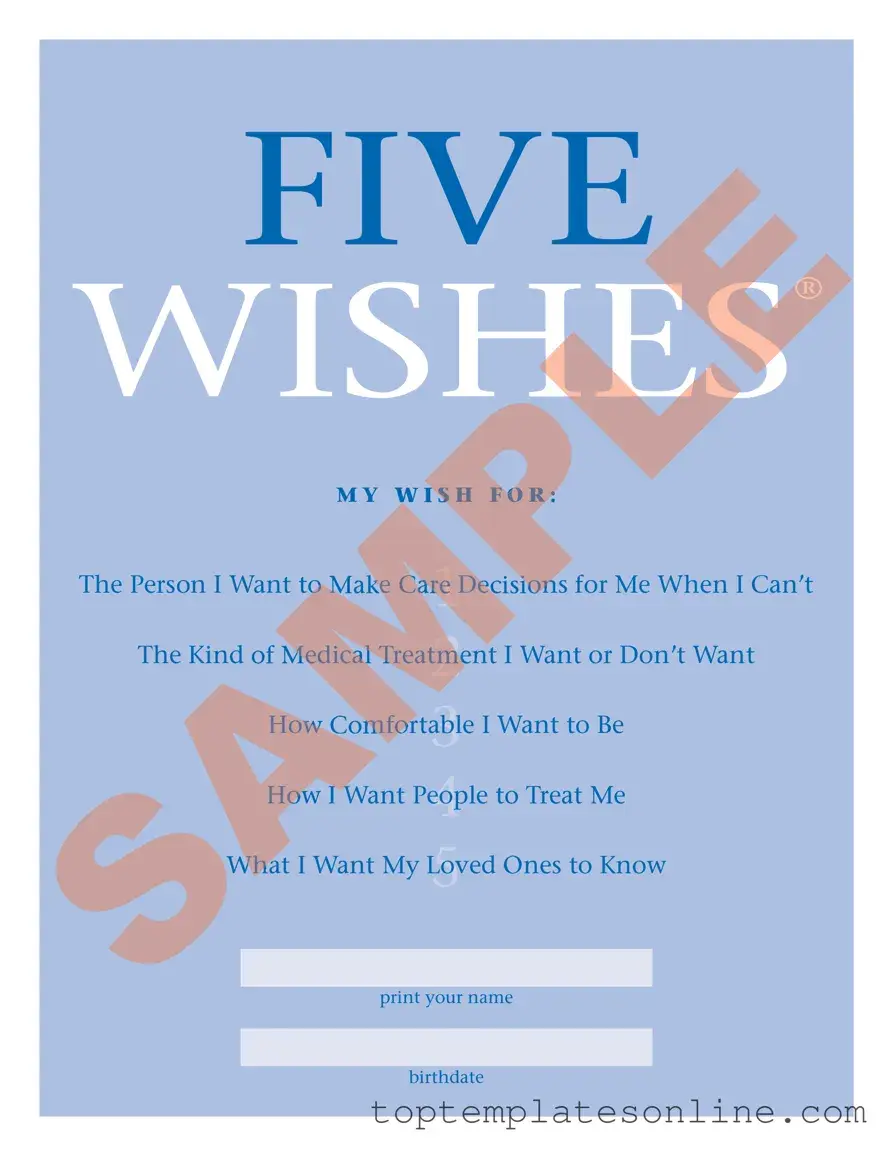In a world where uncertainty often looms, the Five Wishes document stands as a beacon of clarity and control for individuals facing serious health challenges. This innovative form allows individuals to articulate their preferences regarding medical care and personal treatment, ensuring that their values and desires are respected even when they cannot speak for themselves. The Five Wishes document empowers users to designate a trusted person to make healthcare decisions on their behalf, outlining their specific wishes for medical treatment, comfort, and the manner in which they wish to be treated by others. It also addresses the emotional and spiritual aspects of care, making it unique among traditional living wills. Designed to be user-friendly, the form requires only simple checks, circles, or brief written responses, making it accessible to everyone, regardless of their background. With legal validity in most states, Five Wishes not only facilitates important conversations among family members but also alleviates the burden of decision-making during critical times. Originally inspired by the compassionate work of Jim Towey alongside Mother Teresa, this document has reached millions, providing a framework for individuals to express their wishes and for families to navigate the complexities of healthcare decisions with confidence and compassion.
